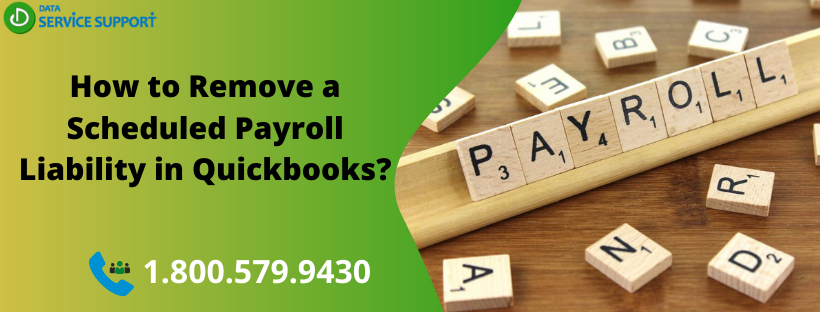Whether you found that an employee was paid too much or too little or an employee was included on the payroll that did not need to be paid, you might require to remove a scheduled payroll liability in Quickbooks. Moreover, if incorrect hours and earnings types were entered or incorrect taxes were withheld because of a mistake with the employee setup, it is intrinsic to the user to delete scheduled payroll in Quickbooks to start afresh. Recently we have received tons of requests from the Quickbooks users to create a comprehensive guide on “How do I delete a scheduled pay liabilities in QuickBooks?”. So we have finally come up with the step by step guide that would help you to remove a scheduled payroll liability.
Before coming to the steps, let’s know more about payroll liability and essential aspects to be considered before deleting or removing a scheduled payroll tax liability in order to make it easy for the users. For additional help and support dial 1.800.579.9430
Brief About Payroll Liability in QuickBooks
In general terms, payroll liabilities are any type of due payment that a business owes or need to pay but has not yet paid. These liabilities include wages of the employees but have not yet received, payroll tax amounts that withheld from employees and other such payroll-related amount or cost.
Any small error in payroll liabilities can result in a huge loss when you attempt to run the payroll for your employees in any Quickbooks application or service. So, it is necessary to remove a scheduled payroll liability in case of any error or issue.
Important Aspects to be Considered before Deleting or Removing a Scheduled Payroll Tax
- Ensure that you have an active Quickbooks payroll subscription.
- Make sure that Tax tables are updated based on the latest rules and updates.
- Ensure that you have the latest version of the QuickBooks Desktop application or service. If not, install it before going ahead with the steps mentioned below.
- Tax liabilities set up earlier cannot be deleted or changed from the payroll schedule.
- Enabling the inactive mode in payroll tax liabilities will no way clear the taxes. Users are required to define the tax amount before tax payments to eradicate the error.
Now that you know about all those important points that need to be taken care of before deleting or removing scheduled payroll liabilities let’s begin with the steps.
Easy Steps to Delete or Remove Scheduled Payroll Liabilities
Follow each step carefully to remove Scheduled Payroll Liabilities in Quickbooks desktop.
- Launch the Quickbooks application.
- Now go to the Employees tab in QuickBooks Desktop and click on Payroll Center
- Further, go to the Pay Liabilities section and click on the “Other Activities” drop-down menu.
- Now click on the Change Payment Method
- You will find the QuickBooks Payroll Setup screen. There select Benefits and Other Payments.
- Click Schedule Payments
- Further, select the payroll item that you want to edit.
- Click I don’t need a regular payment schedule for this item from the Payment Frequency option.
- Click on “Finish” twice to save the changes.
In case you want to set up new payroll schedule liabilities, then you would require to delete old payroll schedule liabilities in Quickbooks desktop application. Here are the easy steps that will help you to remove payroll schedule liabilities in less than no time.
- Go to the Payroll Center in Quickbooks application.
- Now under the “Payroll Center,” you will find the Payment Activities drop-down menu.
- Click on the drop-down and select Adjust Payroll Liabilities.
- Now type in the total amount for the complete liability period.
- Further, click twice on the payroll item and enter the adjustment that should be negative numbered.
- Go to the Accounts Affected option and choose “Do Not Affect Accounts.”
- Hit “OK” and edit the next payroll item.”
Hope you find this tutorial, comprehensive and easy to implement. In case you were unable to remove or delete a scheduled payroll liability in Quickbooks, then you can connect with an expert to avail prompt assistance by dialing our QuickBooks error support helpline number 1.800.579.9430. For more such guides, stay tuned.
